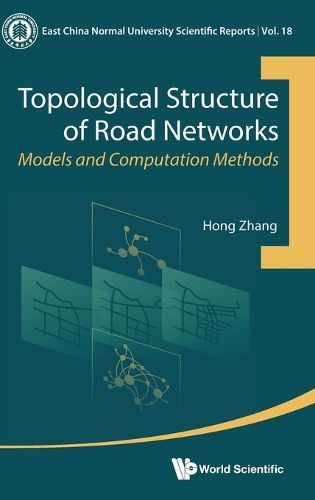Readings Newsletter
Become a Readings Member to make your shopping experience even easier.
Sign in or sign up for free!
You’re not far away from qualifying for FREE standard shipping within Australia
You’ve qualified for FREE standard shipping within Australia
The cart is loading…






This title is printed to order. This book may have been self-published. If so, we cannot guarantee the quality of the content. In the main most books will have gone through the editing process however some may not. We therefore suggest that you be aware of this before ordering this book. If in doubt check either the author or publisher’s details as we are unable to accept any returns unless they are faulty. Please contact us if you have any questions.
Roads are essential components of a city. Despite their increasing importance in our daily lives, modeling and simulating road networks is challenging due to their dynamic and complex nature. The underlying order and patterns of the seemingly chaotic and diverse physical patterns of roads are still unclear. Furthermore, there is a knowledge gap regarding the relationships between the size, scale, shape, structure, and space of road networks.This book presents the state-of-the-art in computational methods for modeling the topological structure of road networks. Each chapter focuses on a specific aspect of this topology and provides models, indicators, and empirical studies of road network structures. The book includes six types of structural models and three types of spatial simulation models to help understand the topological structural complexity of road networks. The appendices include several examples of road networks and their universal scale-free patterns.This interdisciplinary book is helpful for individuals interested in spatial modeling, network analysis, transportation geography, and urban studies. It is also a fundamental resource for modeling and computing spatial complex systems. The book is suitable for undergraduate, graduate, and professional researchers interested in geographic modeling and urban design. The text is written with moderate mathematical detail to enhance comprehension of the concepts and principles presented. The use of maps, graphics, and examples makes the modeling and computational processes more intuitive.
$9.00 standard shipping within Australia
FREE standard shipping within Australia for orders over $100.00
Express & International shipping calculated at checkout
This title is printed to order. This book may have been self-published. If so, we cannot guarantee the quality of the content. In the main most books will have gone through the editing process however some may not. We therefore suggest that you be aware of this before ordering this book. If in doubt check either the author or publisher’s details as we are unable to accept any returns unless they are faulty. Please contact us if you have any questions.
Roads are essential components of a city. Despite their increasing importance in our daily lives, modeling and simulating road networks is challenging due to their dynamic and complex nature. The underlying order and patterns of the seemingly chaotic and diverse physical patterns of roads are still unclear. Furthermore, there is a knowledge gap regarding the relationships between the size, scale, shape, structure, and space of road networks.This book presents the state-of-the-art in computational methods for modeling the topological structure of road networks. Each chapter focuses on a specific aspect of this topology and provides models, indicators, and empirical studies of road network structures. The book includes six types of structural models and three types of spatial simulation models to help understand the topological structural complexity of road networks. The appendices include several examples of road networks and their universal scale-free patterns.This interdisciplinary book is helpful for individuals interested in spatial modeling, network analysis, transportation geography, and urban studies. It is also a fundamental resource for modeling and computing spatial complex systems. The book is suitable for undergraduate, graduate, and professional researchers interested in geographic modeling and urban design. The text is written with moderate mathematical detail to enhance comprehension of the concepts and principles presented. The use of maps, graphics, and examples makes the modeling and computational processes more intuitive.